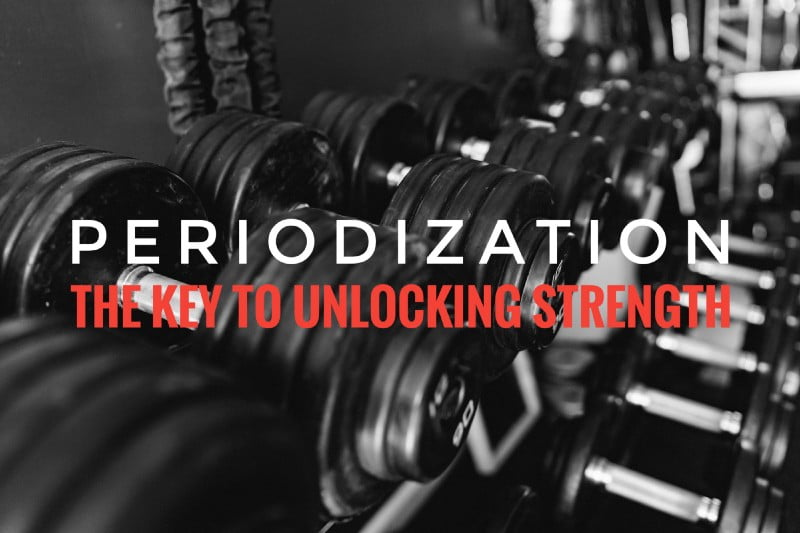Knowledge
Periodization : The Key To Unlocking True Strength
Articles, Crossfit, Strength and performance

Periodization : The Key To Unlocking True Strength
“Periodization: Long-Term Cyclic Structuring Of Training And Practice To Maximize Performance To Coincide With Important Competitions.”
In the strength community, the word periodization is thrown around like a crack pipe in Verdun. There are many ways to periodize one’s strength training but let’s break down how we would use a block periodization approach specifically in preparation for a meet!
This model is split into three blocks:
- Hypertrophy block (accumulation phase)
- Strength block (intensification phase)
- Peaking phase (realization phase)
1- Hypertrophy block (accumulation phase) :
The first hypertrophy phase is the kickstart of prep, it’s also often used coming out of a meet. We usually like to steer away from the « big 3 » lifts and focus on different movements, mostly bodybuilding type work with higher volume and emphasizing going to failure (ex: focusing on shoulder work 5×10). This allows for more recovery coming out of a meet and helps us prepare for the next phases to come. It’s also used to maximize muscular hypertrophy in weak areas which could, in turn, prevent us from getting injured when the weights start to get heavy again.
We can even split the hypertrophy phase in two and follow up with a more functional hypertrophy block. This phase also serves to help build muscles and gain maximum hypertrophy, all while keeping high volume a priority. Although now, we would use specific variations of the squat, bench, & deadlift OR even use those actual lifts in either higher rep ranges or a higher amount of working sets (ex:6×8 on deadlifts). Not only will this block allow us to practice and master lifting technique while weights aren’t too heavy, but this volume work will also specifically help us lift heavier weights and recover optimally in the next phase.
2- Strength block (intensification phase):
This is considered the meat and potatoes of periodization, this is where we use the newly added muscle mass and progressively increase the load on the bar week after week. We INCREASE the intensity (the load on the bar)all while slowly DECREASING the training volume. This is where WE BUILD our strength, not where we test it!
This is the where we teach our central nervous system to lift with sound technique WITH heavy load, this is definitely the most crucial phase leading to competition. It’s also important to plan deload weeks accordingly.
Depending on the athlete’s skill level and chosen competition date, we could alternate back and forth between lighter hypertrophy phases and strength phases without necessarily leading into a peaking phase.
3- Peaking (realization phase) :
This is the final phase leading up to the strength test, this phase is where a lot of people tend to screw up their preparation.
There’s a fine line between peaking and overtraining and it becomes increasingly important to focus on recovery to avoid too much fatigue and injury.
We now start doing doubles and singles and make our way into the 97.5–100% of our 1RMs.
If we feel like things click, strength is through the roof, the bar moves fast and easily, and if our coach gives us the green light we can even potentially hit PR’s but only IF the bar moves well.
Many people like to take their planned openers in the gym a week of two prior to the meet, it gives them more confidence going into the meet.
Final Deload + Strength Test:
Time to kick back, sleep, eat (provided we’re within our weight class) and basically do as little as possible. Time to let our body completely recover from all the heavy & high volume training we’ve accumulated and finally achieve super-compensation (102–105% of our 1RM).
Testing your 1RM’s is very taxing and creates a lot of energy debt, most proficient strength coaches believe it shouldn’t be done more than twice a year.
If you want to truly become stronger, you need to plan ahead, be patient and be ready to only test at the proper moment.
Planning months of strength training is the key to speeding the gains process, reducing the rate of injuries, and enabling a proper peaking phase!